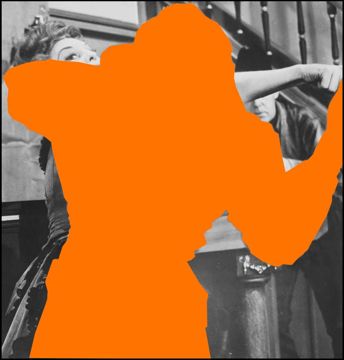
John Baldessari, Two-Person Fight (One Orange): With Spectator, 2004 Courtesy Marian Goodman Gallery, New York
Art classrooms are often noisy places. In college they sometimes make a u-turn and become silent morgues where students wait patiently in cold studios for individual crits, but in general, art classrooms are full of activity. Because our classes have such a infectious energy many teachers are often in the position of riding a “wave” of work but putting real conversation and meaning-making on the back burner. Teachers can get caught making excuses about why their students “can’t have a conversation” or “won’t be quiet”, and consequently plan lessons that require extremely quick instructions that follow with a period of “work”- there’s no reflection, no connections, do not pass Go, do not collect $200.
This is a recipe for disaster.
The most effective classrooms I have had the pleasure to visit, teach in, or simply learn about have common elements that include, but aren’t limited to:
- Varieties of teaching strategies that consider multiple learning styles
- Changes in rhythm and tempo of lessons
- Big questions and/or ideas that students are working with
- Effective and simple classroom management techniques- nothing fancy
Part of what makes students ready to discuss works of art, participate in partner work, or break their routine in any way involves something that all of us appreciate- a little heads-up.
For example, when students know in advance that the next session will involve art making AND a partnered conversation and sharing, they are more prepared to do so next time vs. being surprised and complaining. We can avoid a few of the “Why do we have to read?” comments if we prep students for when and why we’re reading in advance. Being up front about our planning and next steps is in itself a classroom management technique and a way to more effectively facilitate students talking with one another about questions and ideas that surface in contemporary art. A little heads-up can go a long way.




Pingback: What’s Cookin at the Art21 Blog: A Weekly Index | Art21 Blog